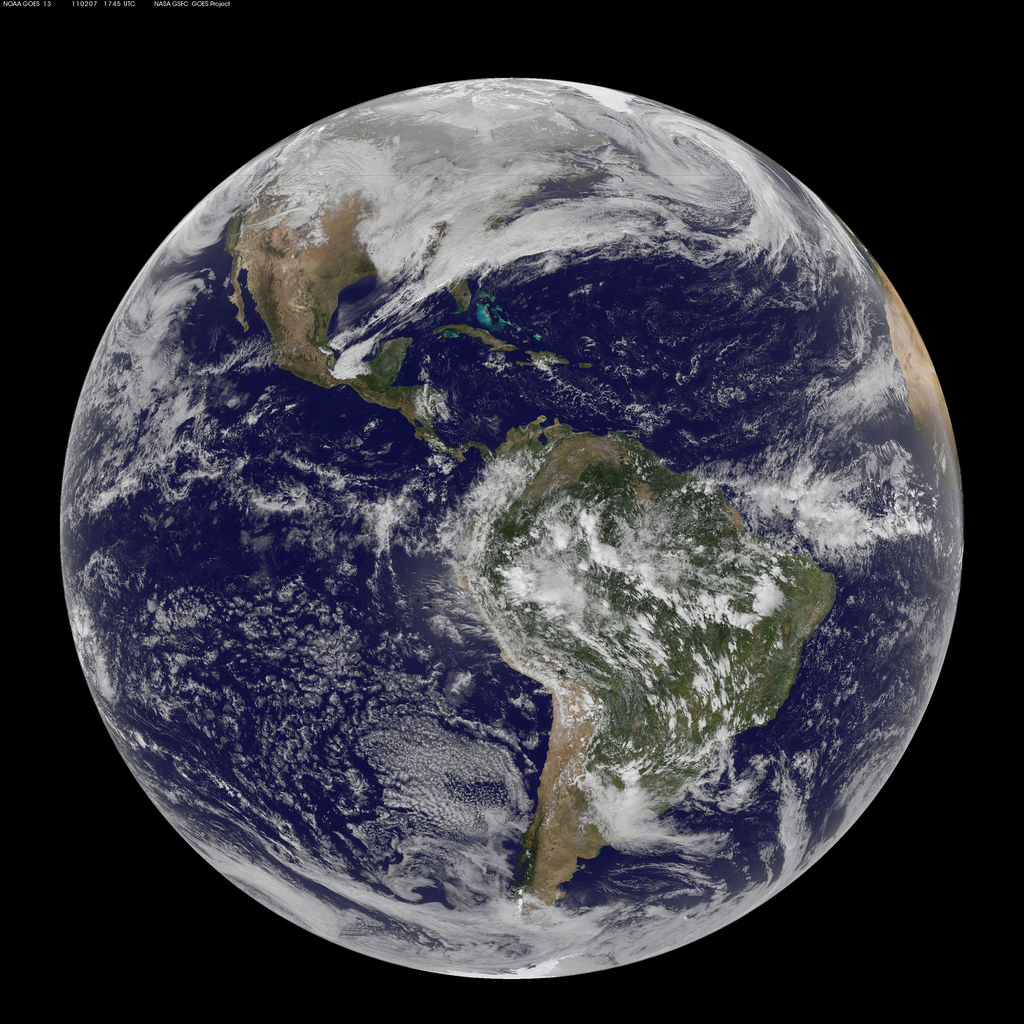On Fourth of July, Earth Is Farthest from the Sun

The weather forecast for this year's Fourth of July holiday in the United States calls for high temperatures across much of the country's central and southern states, with some places expected to surpass 100 degrees for the American holiday. So it may come as a surprise that despite this heat, the planet is actually about as far away from the sun as it ever gets.
At about 11 a.m. EDT (1500 GMT) on the Fourth of July, the Earth will reach that point in its orbit where it is farthest from the sun. Called aphelion, this location in Earth's orbit puts the planet about 94.5 million miles (152 million kilometers) from the sun. That's about 3.1 million miles (4.9 million km) more than the Earth's closest distance to the sun (called perihelion), which occurred on Jan. 3.
The exact difference in the distance between Earth's closest and farthest points from the sun is 3,104,641 miles (4 996 435 km), or 3.28 percent, which makes a difference in radiant heat received by the planet of nearly 7 percent. The average distance between the Earth and sun is about 93 million miles (150 million km). [10 Extreme Planet Facts]
Closer doesn't necessarily mean hotter
If you ask most people in the Northern Hemisphere which month of the year they think the Earth is closest to the sun, they may likely say it happens in June, July or August, some of the hottest months of the year.
But our warm weather doesn’t relate to our distance from the sun. It's because of the 23.5-degree tilt of the Earth's axis that the sun is above the horizon for different lengths of time at different seasons. The tilt determines whether the sun's rays strike us at a low angle or more directly.
At New York's latitude, the more nearly direct rays at the summer solstice of June 21 bring about three times as much heat as the more slanting rays at the winter solstice on Dec. 21. Heat received by any region is dependent on the length of daylight and the angle of the sun above the horizon.
Breaking space news, the latest updates on rocket launches, skywatching events and more!
So there are noticeable differences in temperatures that are registered over different parts of the world, including the Southern Hemisphere, where it is winter right now.
A climate fallacy
When I attended Henry Bruckner Junior High School in The Bronx, my earth science teacher, Mr. Shenberg, told all of us that because Earth is farthest from the sun in July and closest in December, that such a difference would tend to warm the winters and cool the summers … at least in the Northern Hemisphere.
And yet the truth of the matter is that the preponderance of large land masses in the Northern Hemisphere works the other way, and actually tends to make the winters colder and the summers hotter.
Interestingly, the times when the Earth lies at its closest and farthest points from the sun roughly coincide with two significant holidays. When Earth is closest to the sun around New Year's Day and farthest from the sun around Independence Day.
Depending on the year, the date of perihelion can vary from Jan. 1 to 5, while the date of aphelion can vary from July 2 to July 6.
So while you're out in the Fourth of July sun this holiday, take a moment to appreciate the celestial dance the Earth is making at the exact same time and enjoy the sunshine.
Joe Rao serves as an instructor and guest lecturer at New York's Hayden Planetarium. He writes about astronomy for The New York Times and other publications, and he is also an on-camera meteorologist for News 12 Westchester, N.Y.
Join our Space Forums to keep talking space on the latest missions, night sky and more! And if you have a news tip, correction or comment, let us know at: community@space.com.

Joe Rao is Space.com's skywatching columnist, as well as a veteran meteorologist and eclipse chaser who also serves as an instructor and guest lecturer at New York's Hayden Planetarium. He writes about astronomy for Natural History magazine, Sky & Telescope and other publications. Joe is an 8-time Emmy-nominated meteorologist who served the Putnam Valley region of New York for over 21 years. You can find him on Twitter and YouTube tracking lunar and solar eclipses, meteor showers and more. To find out Joe's latest project, visit him on Twitter.
